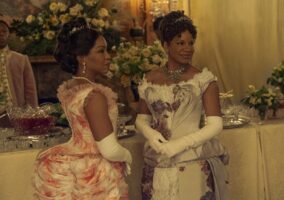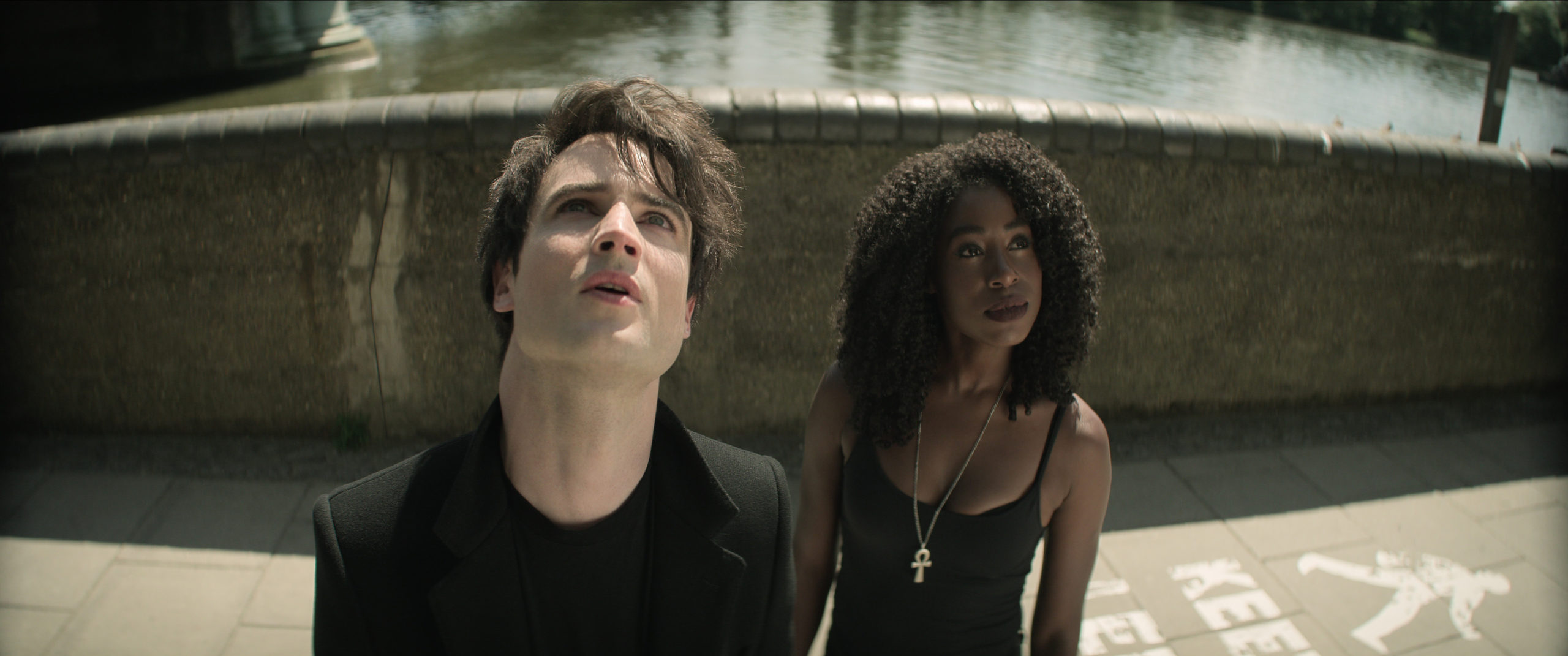
Dream tries to process his trauma and reconnect with friends and family as the series takes a breather from all the doom and gloom to introduce two of its most beloved characters and tell two of its most celebrated tales.
Morpheus is sitting on a park bench in London, feeding the birds, when a cute, friendly, ankh-wearing girl sits down next to him and asks him how he’s doing. She is, of course, his sister Death, who immediately sums herself up by quoting a line from Mary Poppins and asking him why he’s moping around. He recounts everything that he’s been through since he escaped and noted that he was enjoying himself because he had “a true quest,” something the King of Stories would naturally respond to. He’s been feeling empty ever since he regained all of his power, even though he’s more powerful than he has been in eons. There is something to be said of the idea that because Dream is the King of Stories, he must always be in some sort of story or pursuing some sort of story for himself, so these sorts of in-between moments have a tendency to frustrate or depress him. We’ll see that he’s far more likely to go on little adventures than any of his siblings. Death gets annoyed with him for not having the balls to go out and find a new little game to play and says he could have called her if he was feeling this way. He responds that he didn’t want to worry her. She gets all big sister on him. “You are utterly the stupidest, most self-centered, pathetic excuse for an anthropomorphic personification on this or any other plane.” She invites him to come with her while she works. A guy playing football in the park can’t help but notice the hottie on the park bench and asks if he can see her again. “Sure, Franklin,” she tells him gently. “You’ll see me again.”
Kirby Howell-Baptiste looks about as much like the comic book version of her character as Tom Sturridge does, which is to say that she embodies the look exactly without being entirely beholden to the extremely dated styles she was depicted wearing at the time. We mention that only because Death is a literally iconic character, whose look became so copied and referenced in the decades since her introduction that it borders on cliche. She’s not the first Goth Chick, but she was the one who brought the look to a couple generations of awkward, shy or nerdy kids looking for a dark heroine. The face that launched a thousand Hot Topics, sold a million ankhs, and inspired an uncountable number of tattoos. Kirby not only gets the look right in a less dated sort of way, she also flawlessly taps into everything that makes the character of Death so beloved. For a longtime or fan of the books, we simply can’t imagine not embracing her portrayal wholeheartedly. She understands the charm of Death. “You are good with them,” Dream observes after she charms a fruit seller to give her an apple. “Apples?” “Humans.” She gets across the unusual bonds and ethics of beings as old as the universe. Dream tells her that his captors were actually trying to ensnare her. “Yeah, I know.” She says it with a small undertone of regret, but there’s no sense that she feels responsible for what happened to him. She immediately pivots to taking off her shoes and urging him to do so. “It’s good to touch the earth with your bare feet. It’s grounding.” There’s a very tiny needle that needs to be threaded with Death. She needs to be warm and empathetic, but she also needs to be clearly not human.
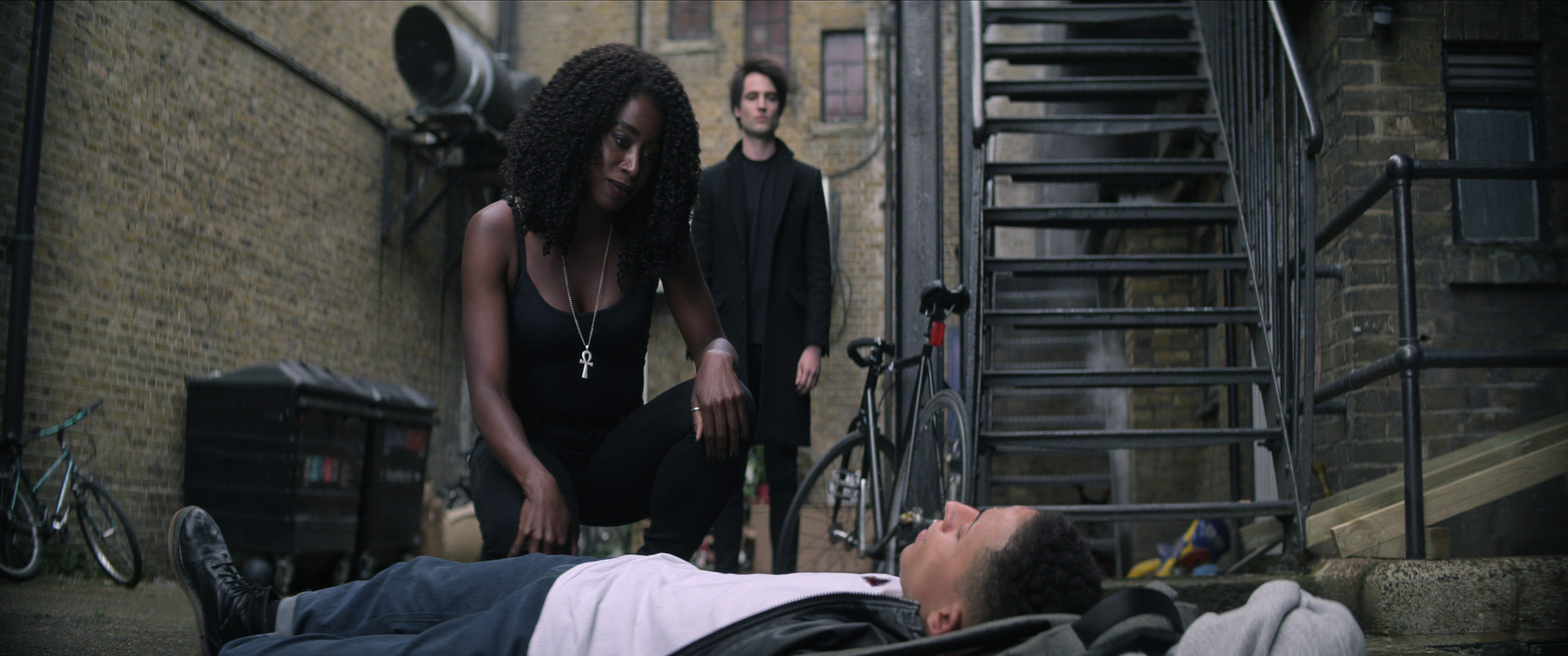
We get the purest sense of her work and how she approaches it in the scene with the old man playing Schubert on a violin. She is beautifully respectful and encouraging. “All we have is a fragment,” he says when she asks him to play more. That line might hit like a sledgehammer given the themes of this episode, but the entire scene is so gorgeously played. “I know who you are, Harry. Do you know who I am?” The gentleness, the empathy. Giving him a moment to say the Shema. Answering “Now’s when you find out, Harry.” It’s all just how you’d want Death to be when she comes for you. It’s interesting to note how she never introduces herself or says her name to her charges and they come to an acceptance fairly quickly. Some of the scenarios have changed from the original story, and “All our flight information is on our phone. I just need to give her the code” is an utterly heart-crushing modern addition to it.
“I have a job to do and I do it,” she tells her brother, who really should know this by now. “When the first living thing existed, I was there. When the last living thing dies, I’ll put the chairs on the table, turn out the lights, and lock the universe behind me.”She is a universal constant and inevitability, although she admits that she’s not “there for all of them,” mentioning the 280-year-old Mad Hettie and “your ongoing project.” He keeps asking her how she can do it or whether it bothers her, which should give you some indication of how long it’s been since he asked her about herself. Imagine having the same job for trillions of years and your brother never even asks you about it. “They fear the Sunless Lands, yet they enter your realm every night without fear,” she reminds him. Kirby Howell-Baptiste is very good at giving Gaiman’s sometimes florid dialogue a feeling of spontaneity. She confesses to a period where she found her job too difficult to do and considered walking out on it, “a long time ago, long before this world.” She speaks of getting hard and brittle. “People feel as pleased to have been born as if they did it themselves, but they get upset and hurt and shaken when they die.” She learned that all they really need is a kind word and a friendly face, “like they had in the beginning.” And with that, she takes a baby to the other side. “People may not be ready for my gift, but they get it anyway” She reminds him that the only reason she and their family exist is because they serve people. “It isn’t about quests or finding purpose outside our function” she says a little pointedly. “Our purpose is our function. We’re here for them.” There’s a reason she quoted Mary Poppins. “Buck up and do your job,” she’s saying. It’s a very Poppins-esque thing to say. For all her empathy, there is an infinitesimal streak of coldness in Death – there would have to be – and it comes out in little asides or undertones. Kirby is fantastic at getting that across. Dream thanks her and leaves, just as she’s leading poor Franklin, who thought he was going to score her number, over to look at his dead body. We will be seeing quite a bit of her in the stories to come.
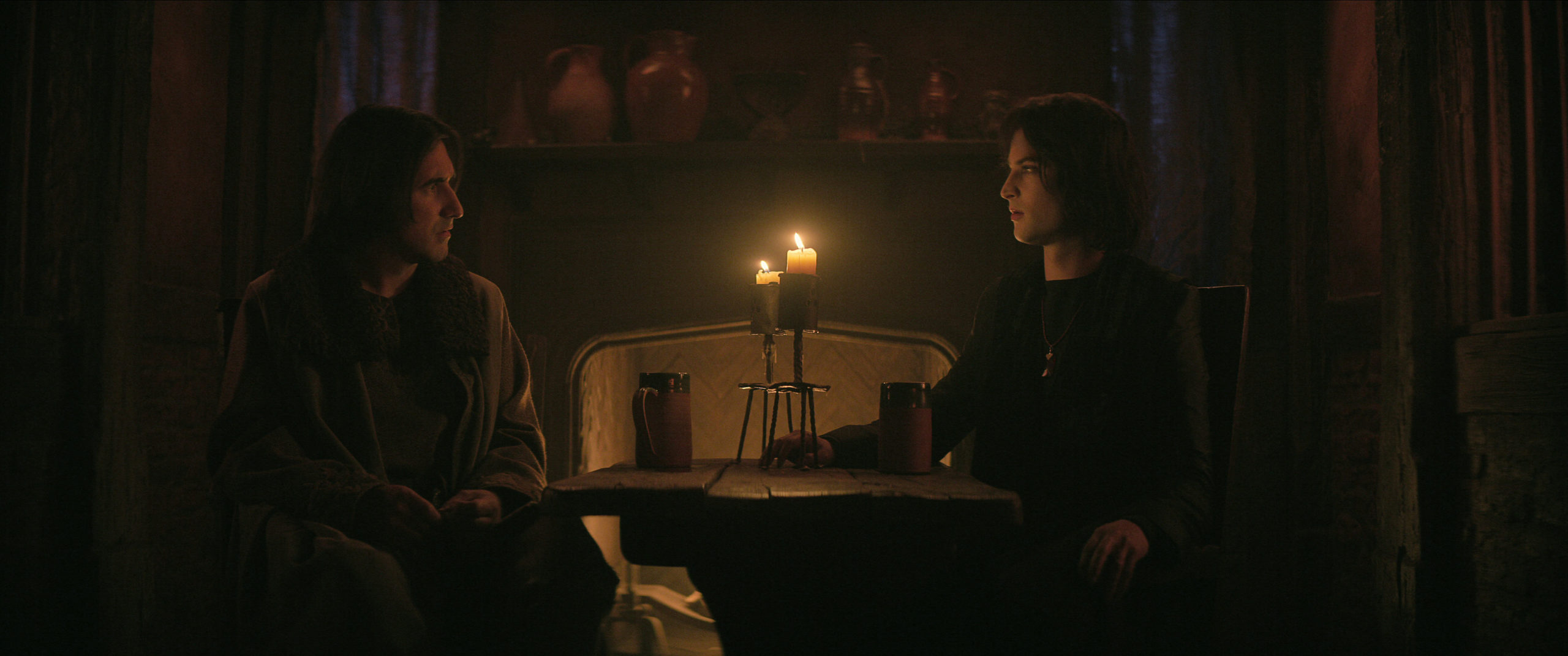
Tom tried his best to not be an annoying fanboy while watching this with newbie Lorenzo for the first time, but he couldn’t help himself when the scene shifted and the title card came up reading “1389.” He paused immediately and said “Okay. Just so you know, you’re about to meet my favorite character in any Sandman story.” Yes, that’s annoying. And yes, Lorenzo was practically weeping by the end of the episode. Of all the characters in The Sandman, no two represent the pure holy beauty of life itself than Hob Gadling and, not ironically but it might seem so at first, Death. The two halves of this episode were originally two separate issues of the comic published half a year apart. The graphic novels are loaded with short one-off tales of Dream or other members of the Endless appearing throughout history and some of them are extremely important to the overall story. We suspect in future seasons, we’re going to see more of these mashed-up episodes. If they’re as well-handled as this one was, we’re all for it. It’s true that there’s something of a visible suture where even a newbie can tell where one story ended and the next one begins, but they work so well thematically.
Death takes Dream to a small London tavern in the year of our Lord 1389. He is mopey and all but rolls his eyes at the idea of spending time with people, but she suggests it will be good for him. As they wander the small candle-lit tavern with their tankards of cheap ale, they listen to complaints about taxes, war, and plague, with calls for a return to law and order, predictions of revolution, and racy jokes about friars with their hands up skirts. Over in one corner, Geoffrey Chaucer is being told that people don’t want to hear “filthy tales in rhyme about pilgrims.” He retorts that he enjoys “Tavern tales, told of an evening,” which is, of course, exactly the tale we’re watching unfold. “A delegation of Faerie came to see me last night,” Dream tells his sister. “They’re talking about abandoning this plane forever.” Put a pin in that. Over in one corner, a braggart and former soldier is in his cups and boastfully trash-talking the very idea of death, having had his fill of it fighting wars and watching plagues unfold. Death herself is amused by his boasting. “Why would any sensible creature crave an eternity of this?” asks Dream, clearly deep in his emo period. Big sis smiles back. “You could find out.” She agrees to withhold her gift and Dream agrees to observe what happens when a man doesn’t die, sneering that he will be begging for her to come take him sooner rather than later. He goes to Hob and tells him to meet him in this tavern in a hundred years if he truly plans on not dying.
In their first reunion, Hob is scared at first, thinking he’s made a deal with a wizard or a demon. Dream assures him that he has no designs on him and merely wants to see what it’s like for him not to die. Hob tells him that it’s fucking brilliant and marvels at the world changing around him, pointing out chimneys, handkerchiefs and playing cards as advancements that make him want to keep living. Ferdinand Kingsley is absolutely wonderful in every one of these scenes. This character is harder to portray than it might seem at first. He has to reflect the times in which he lives as well as reflect the advancement that comes with centuries of life, going from a fairly thick-headed soldier to a literal slave trader to a clever, emotionally intelligent modern guy who’s been through it all — and he has to remain charming the entire time. In their second reunion, in 1589, William Shakespeare is over in the corner completely fanboying over Christopher Marlowe while Sir Robert Gadlen welcomes his friend. Money, a knighthood, respectability and a family have all come his way and he’s eager to show off his good fortune to his “old stranger,” as he addresses him. It’s a lovely little moment when Hob is hurt by Dream’s sudden interest in Will Shakespeare; the kind of emotional undertone that can’t really be conveyed in a graphic novel. Dream leaves Hob to have a talk with the fledgling playwright. “Would you write great plays? Create dreams to spur the minds of men?” Put a pin in that entire conversation.
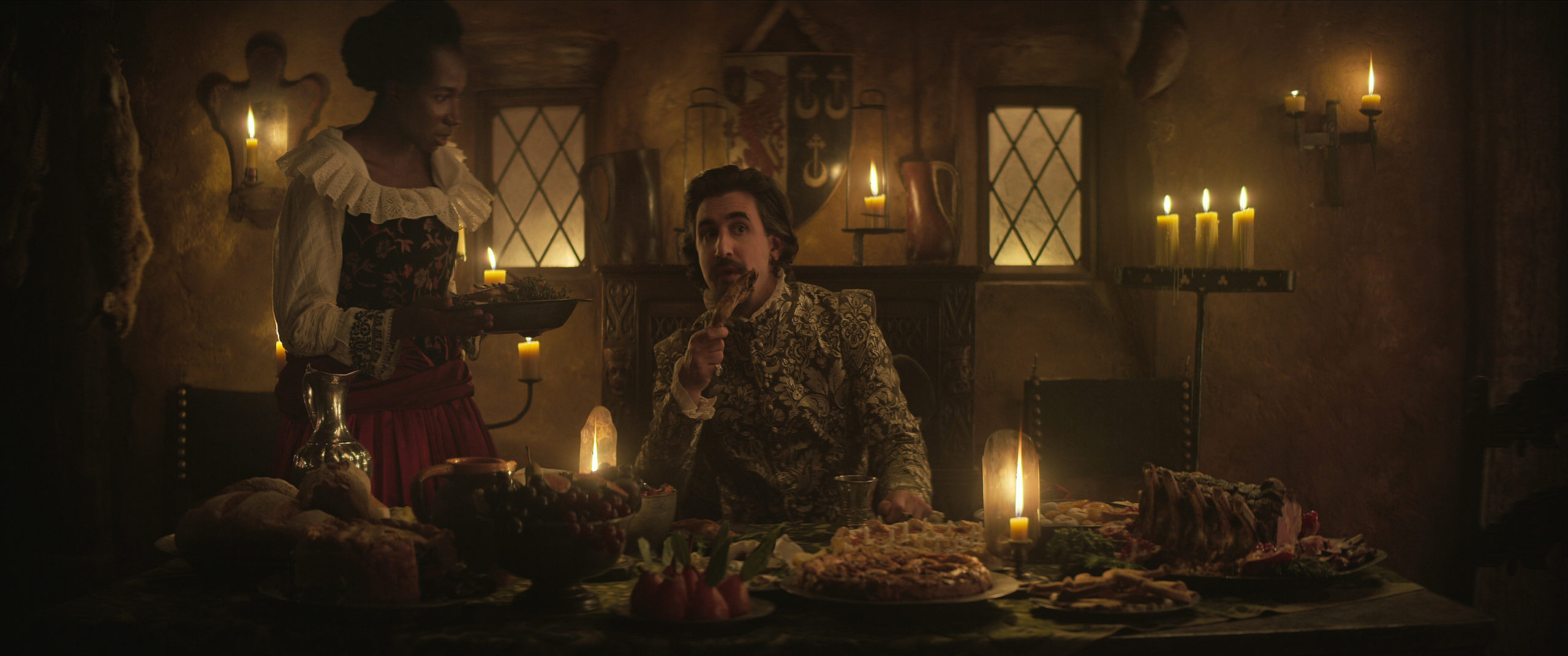
In 1689, the tavern has been completely rebuilt and expanded – with a second floor, no less. Hob has made no such improvements in his life. He nearly gets thrown out for being a beggar. “Do you know how hungry a men gets,” he asks Dream (who looks fabulous, by the way), “if he doesn’t die but he doesn’t eat?” Things all went wrong for him in the previous century, having lost his fortune and family. “I’ve hated every second of the last eighty years,” he tells Dream. “Every bloody second.” When Dream asks him if he still wants to live, he gets a perfect Hob Gadling response: “Are you crazy? Death is a mug’s game, I’ve got so much to live for.” As we said, Kingsley is flawless in every scene.
In 1789, a much more refined and worldly Hob meets up with Dream in a much finer tavern to talk about the tumult of the Empire and his new career in the slave trade. “It’s a poor thing for one man to enslave another,” Dream tells him coldly. “It’s just how it’s done,” Hob replies defensively. “I suggest you find a different line of business,” Dream retorts. Hob is annoyed that Dream would lecture him now, after 400 years of not even telling him his name. Before they can further hash out the moral considerations of the matter or the deficiencies of their friendship, Lady Johanna Constantine makes her appearance. She tells them both that their meetings have become the stuff of legends throughout the century and that she’d tracked them down in order to find out their secrets. For the newbs, in case there’s any confusion: Johanna Constantine here, played by Jenna Coleman, is not another immortal being in the Hob Gadling or Mad Hettie mode. This Johanna Constantine is the ancestor of the one who helped Dream regain his bag of sand in the third episode. It’s a minor nitpick, but we were hoping they’d put her in a blonde wig or something just to differentiate her a little from her descendent. Coleman is great in this scene, even if it is a major step-down from the scenery chewing she was doing just a few episodes ago. In the books, Johanna is all lace, blonde ringlet curls and formality; the kind of aristocratic English lady adventurer who shouts out “La!” and says words like “durst.” We get why they went with a more streamlined, slightly more modern-feeling version of the character, but the OG version was just dripping with 18th century-isms and we kind of missed it. As Dream notes to Hob a century later, Johanna “undertook a task” for him. At this point, we don’t even think we need to tell you to put a pin in that, although it may be a while before you return to it. Suffice it to say, there’s a good reason for casting Jenna Coleman in this role and she’ll get her chance to tear it the fuck up again, trust.

In 1889, Hob is chastened and embarrassed by his brief time in the slave trade and grateful to Dream for setting him right. But he’s also frustrated by 500 years of meetings with someone who won’t even tell him his name and comfortable enough after the highs and lows of that time to be blunt with him. You get to know someone when you see them over that many years, regardless of whether they’re comfortable revealing anything about themselves. Hob rightly points out that Dream is lonely and meets him for friendship, which does not go over well with the haughty immortal boy king. He storms out and Hob calls after him that he’ll be waiting in a hundred years for his FRIEND to return. Some social media and fandom responses this weekend have interpreted this relationship as a romantic one and it’s hard to deny the undertones of a scene like this. We’d never argue against a same-sex romance for Dream and we’d definitely never be so foolish as to tell shippers what to think, but in thirty years of reading these stories, big ol’ homosexual Tom never once saw it that way. To us, it’s as pure a representation of male platonic friendship as you’ll see anywhere, but of course these things are open to interpretation. When Dream finally reconnects with Hob in the present day, having missed their 1989 meeting because he was imprisoned, he apologizes because he’s always been told that it’s impolite to keep one’s friend’s waiting. It’s a direct lift from the books (as always, a good 80% of the dialogue is) and a flawless payoff to a beautifully told tale.
Just as it was in the original comic, it’s just plain fun to watch two characters move quickly through history, the fashions and furnishings changing around them to keep up. This is the first time we get to see Dream as the fashionable being the books occasionally portrayed him to be. He reflects the times and places in which he walks, which is why he looks more like a Dior Homme advertisement in this series than the lead singer of a goth metal band, as he did in the 1989 comic. It was interesting to note how the pub barely changed at all from 1389 to 1489 (save for the technological wonder of chimneys), but then changed drastically each century from 1689 to 1889, reflecting the fits and starts of history as well as the highs and lows of the economy as the Empire expanded and contracted over time, closing at the end of the Thatcher era, no less. It’s also interesting to note that the background conversation and pubtalk throughout the centuries remained largely the same, with people complaining about taxes and revolution in 1989 just as they were in 1389, telling exactly the same jokes about randy vicars with their hands up skirts. There are references throughout to the printing trade, the slave trade, the American revolution and even Jack the Ripper. Both Chaucer and Shakespeare receive rather damning contemporary assessments of their work here over the centuries. It may be fairly universal in its observations, but as a tale, it’s quite specific in its Englishness.
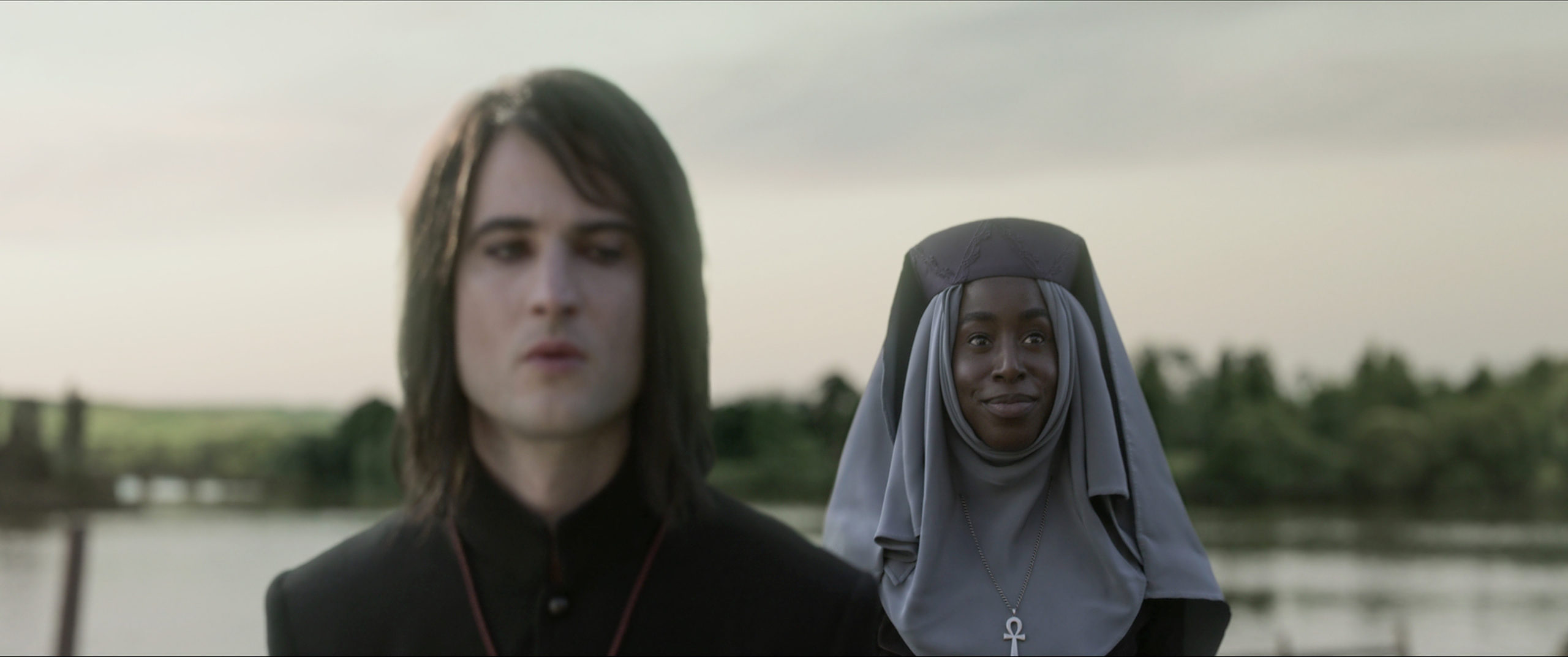
A note here about what might look like inconsistencies or plot holes: Dream knows the stories of Lushing Lou and Johanna Constantine without being told a thing about them, but he asked Hob who Will Shakespeare was and he had to literally follow a sign to discover that Hob had opened a new pub. This is something implied quite a bit in the books, but it may not come across in the series unless someone voices it: Dream sometimes lets stories play out, even as he’s in the story himself. It’s something a trillion-year-old embodiment of stories would do, if only out of boredom, but more likely out of a sense of duty. He knew who Will Shakespeare was. He didn’t need to be told. And even if he didn’t know how Hob was doing, there are far quicker and less human ways for him to find him immediately. Dream went to the site of their old pub, reminisced, and then followed some clues to find the new one, because that’s how stories work. Flashbacks, quests, revelations, reunions. To very much not coin a phrase, tales as old as time. You can map these same sorts or primal or archetypal stories all over The Sandman if you know where to look. In fact, if you look at this story from the most basic and archetypal of perspectives, it’s about a much cooler older sister taking her moody emo baby brother out to the pub and fixing him up with a suitable friend because she knows he needs one. Death chose to deny her gift to Hob Gadling not because he boasted that he’d never die. She must have heard that delusion a million million times before. No, she chose Hob Gadling to be her awkward brother’s friend because he’s cool, funny, and charming and she knew it would take Dream centuries to open up to him. She thought Dream needed to befriend a common man and common men tend to die of old age in the time it takes the reticent immortal to get past the introductions. Big sisters know these sorts of things.
Next: The Doll’s House
THE SANDMAN, Chapter 5. 24/7 Next Post:
THE SANDMAN, Chapter 7. The Doll’s House
Please review our Community Guidelines before posting a comment. Thank you!



